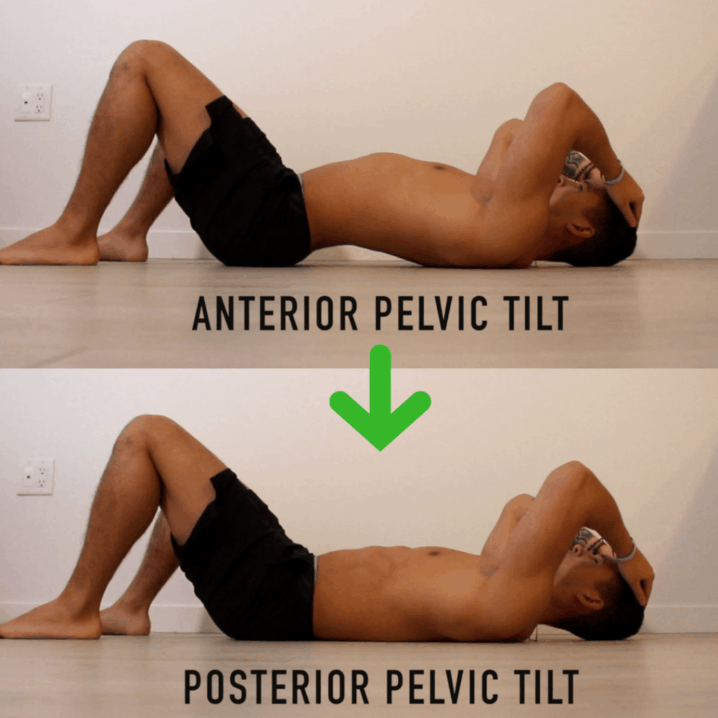

Medically Reviewed by Dr.Amit Kumar Shridhar
Written by Swasthya Saarthi Editorial Team, last updated on 22 March 2025

Lower back pain can be debilitating, affecting daily activities and overall quality of life. Whether caused by poor posture, injury, or muscle strain, seeking guidance from a lower back pain doctor and incorporating the right physiotherapy exercises for lower back pain can provide lasting relief. Strengthening the core and lower back muscles is key to reducing pain and preventing future issues.
Here are five effective physiotherapy exercises for back pain that can help strengthen the lower back, improve flexibility, and alleviate discomfort.
The bridge is an excellent exercise to strengthen the lower back, core, and glutes, all of which provide essential spinal support.
How to do it:
This yoga-inspired stretch improves spinal mobility and flexibility, relieving tension in the lower back.
How to do it:
:quality(70):extract_cover():upscale()/2021/12/02/674/n/1922729/tmp_tdb0lt_63abb2d201fb98ce_Cat-Cow.jpeg)
The bird-dog exercise enhances core stability and balance while engaging muscles along the spine, making it a valuable physiotherapy exercise for back pain.
How to do it:

Pelvic tilts strengthen the lower back and abdominal muscles, improving posture and reducing lower back strain.
How to do it:

This relaxing yoga pose stretches the lower back, hips, and thighs, relieving tension and discomfort.
How to do it:

For those seeking effective physiotherapy for lower back pain treatment in Delhi, several top clinics and hospitals provide expert care tailored to individual needs. Swasthya Saarthi and Venkateshwar Hospital are leading providers, offering specialized physiotherapy programs designed to manage and treat lower back pain.
These institutions utilize a range of advanced treatments, including manual therapy, core strengthening exercises, electrotherapy, and posture correction techniques to address various lower back issues such as muscle strains, herniated discs, sciatica, and chronic lower back pain. Experienced physiotherapists at these clinics work closely with patients to create personalized rehabilitation plans that focus on pain relief, improved mobility, and long-term prevention.
With state-of-the-art facilities and highly qualified professionals, these centers ensure comprehensive care, helping patients recover faster and return to an active, pain-free lifestyle.
If you're looking for a specialist in physiotherapy treatment for low back pain in Delhi/Gurgaon, Dr. Ranvijay Pathak and Dr. Himanshu Tyagi are highly regarded professionals with extensive experience in spinal rehabilitation.
Dr. Ranvijay Pathak, a renowned physiotherapist, employs advanced techniques such as manual therapy, core strengthening exercises, and electrotherapy to address conditions like herniated discs, sciatica, and chronic lower back pain. Dr. Himanshu Tyagi is known for his personalized approach, focusing on posture correction and spinal alignment through targeted physiotherapy exercises for lower back pain and innovative therapeutic methods.
Both doctors collaborate closely with patients to develop customized treatment plans aimed at relieving pain, restoring mobility, and preventing future back problems. Whether you need post-injury rehabilitation, management of chronic pain, or preventative care, Dr. Pathak and Dr. Tyagi offer expert physiotherapy to help you lead a healthier, more active life.
For comprehensive lower back pain treatment in Delhi and Gurgaon, Swasthya Saarthi and Venkateshwar Hospital stand out as top choices. These hospitals specialize in physiotherapy for back pain, offering a variety of treatments, including manual therapy, core stabilization exercises, electrotherapy, and ergonomic training to address a wide range of lower back conditions.
Whether you're dealing with acute injuries, chronic back pain, or post-surgical rehabilitation, these hospitals provide personalized care plans that focus on pain relief, improving flexibility, and preventing future back issues. Their advanced facilities, combined with experienced physiotherapists, ensure faster recovery and long-term spinal health.
Whether you're managing conditions like herniated discs, sciatica, or recovering from surgery, these hospitals offer expert care designed to help you regain mobility and live a pain-free, active lifestyle.
Incorporating these physiotherapy exercises for lower back pain into your daily routine can help strengthen your lower back, improve flexibility, and prevent further discomfort. For a comprehensive physiotherapy treatment for low back pain, it’s essential to maintain proper posture and consider ergonomic adjustments in daily activities.
Before starting any new exercise program, consult a lower back pain doctor or a physiotherapist to ensure the exercises are safe and suitable for your condition. A professional can tailor a rehabilitation plan that best supports your spinal health and long-term well-being.
By staying consistent with these exercises and making lifestyle modifications, you can achieve long-lasting relief from lower back pain and improve your overall mobility.
FAQs for Top 5 Physiotherapy Exercises for Lower Back Pain Relief
The best physiotherapy exercises for lower back pain include the Bridge Exercise, Cat-Cow Stretch, Bird-Dog Exercise, Pelvic Tilts, and Child’s Pose. These exercises target the lower back, core, and glute muscles, helping to strengthen the spine, improve flexibility, and reduce tension. Regularly incorporating these exercises into your routine can alleviate discomfort and prevent future back issues. It’s essential to perform them with proper technique to avoid further strain. For personalized guidance, consult a lower back pain doctor or physiotherapist to ensure these exercises are suitable for your specific condition.
Physiotherapy exercises for back pain help by strengthening the core and lower back muscles, improving posture, and increasing spinal flexibility. Exercises like Pelvic Tilts and Bird-Dog stabilize the spine and reduce pressure on affected areas, while stretches like the Cat-Cow enhance mobility and relieve tension. These exercises also improve blood circulation, promoting healing and reducing inflammation. When combined with professional physiotherapy treatment for low back pain, they offer long-term relief and prevent recurrences. For optimal results, consult a physiotherapist to tailor a routine that addresses your specific back pain issues.
You should consult a physiotherapist if your lower back pain persists for more than a few weeks, worsens over time, or interferes with daily activities. Symptoms like numbness, tingling, or pain radiating down the legs may indicate nerve involvement, requiring professional intervention. A physiotherapist can assess your condition and recommend physiotherapy treatment for low back pain, including personalized exercises, posture correction, and manual therapy. Early intervention can prevent chronic issues and promote faster recovery. If you’re in Delhi/Gurgaon, consult reputable clinics or a lower back pain doctor for expert guidance.
Many physiotherapy exercises for lower back pain are safe to perform at home if done correctly. Exercises like the Bridge, Child’s Pose, and Pelvic Tilts are gentle and effective for strengthening and stretching the lower back. However, improper form can lead to further injury, so it’s crucial to follow professional instructions or seek guidance from a physiotherapist. For chronic or severe pain, professional physiotherapy treatment for low back pain is recommended to ensure exercises are tailored to your condition. Always consult a lower back pain doctor before starting a new exercise routine, especially if you have pre-existing conditions.
Physiotherapy treatment for low back pain in Delhi/Gurgaon typically involves a combination of manual therapy, strengthening exercises, posture correction, and advanced techniques like electrotherapy. Clinics like Swasthya Saarthi and Venkateshwar Hospital offer personalized rehabilitation plans tailored to your condition, whether it’s muscle strain, herniated discs, or sciatica. Physiotherapists will guide you through specific physiotherapy exercises for back pain to relieve discomfort, restore mobility, and prevent future issues. Regular follow-ups ensure progress is tracked, and adjustments are made for optimal recovery. Consulting experienced professionals ensures comprehensive care and faster pain relief.